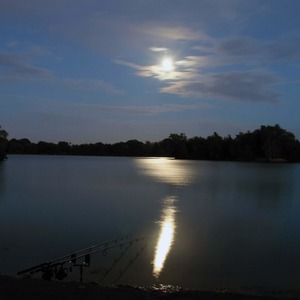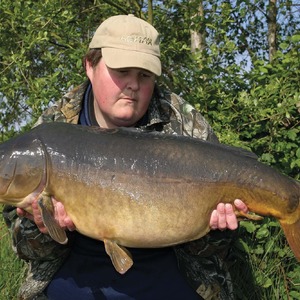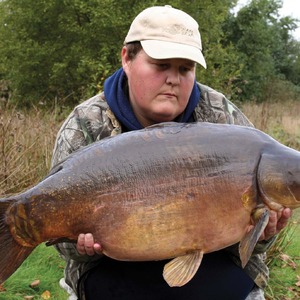Landmark Moments: Wellington
We look back at key events which have helped shape carp fishing. This time around, it's super-water, Wellington Country Park
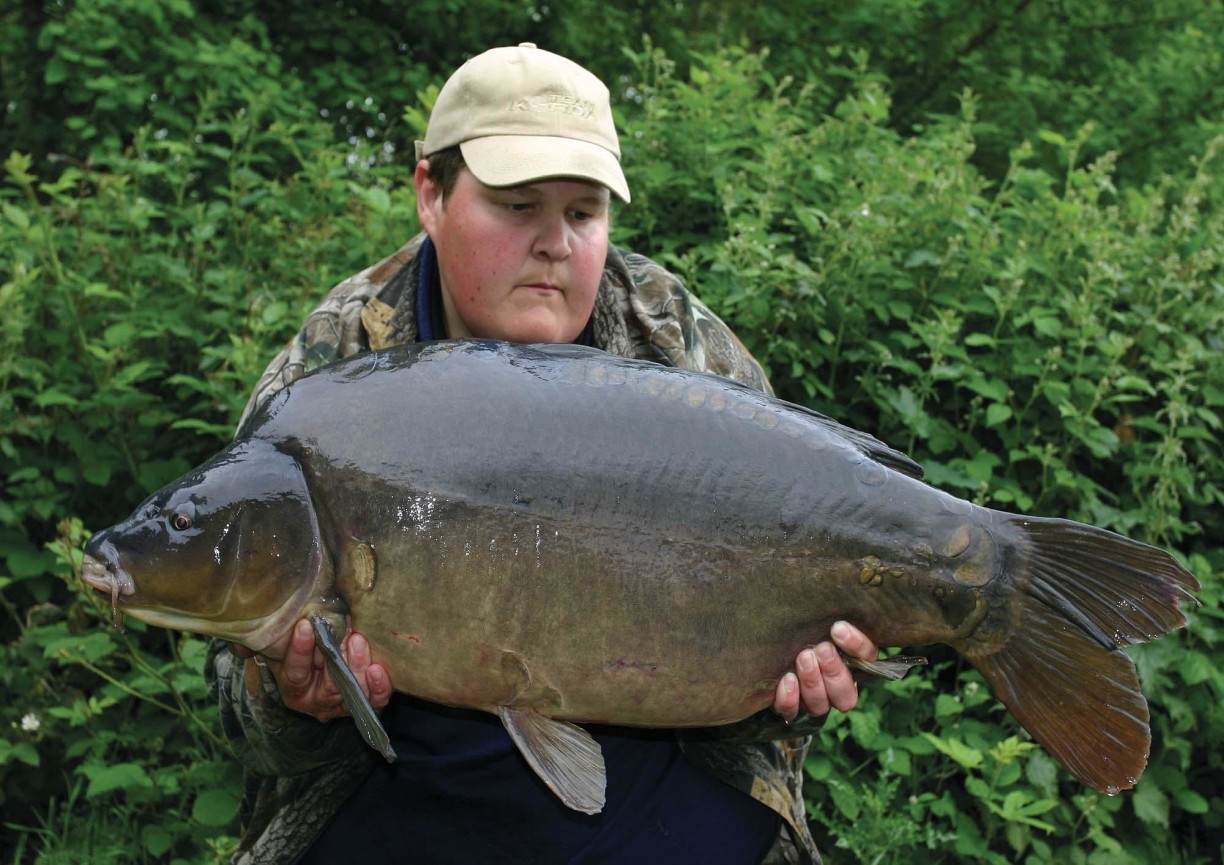
In the UK and across Europe, there are always venues which rise to the top and have a period of time bathed in glory. Redmire, Waveney Valley Lakes, Birch Grove, Horton, Cassian, Raduta and many more. One such ‘super water’ was Reading’s Wellington Country Park—a one-time staple for virtually all the carp titles to feature each month such was its popularity and mindblowing numbers of huge carp. Ian Poole was one of the lucky few (just 35, in fact) to enjoy what the lake had to offer during its early ‘breakthrough years’, and here Ian talks about what life on ‘Welly’ was really like during that period.
CARPOLOGY: When did you first hear about Wellington Country Park; what year did you obtain a ticket; and how much was a ticket then?
IAN POOLE: “I became aware of its name and location in the autumn of 2003, but I had been seeing the carp in the pages of Carp-Talk for at least two or three years before that. One fish had immediately caught my eye and was a carp I would end up knowing as ‘The Turtle’. It was a really distinctive fish, and although it had a different shape from the others, I am fairly good at recognising carp, so over time, I slowly pieced it together. By then, I was pretty sure there were three or four different anglers regularly sending in catches reported from this particular ‘Southern Syndicate’ as it was described in the mag, and I was positive they were all from the same place.
“One of those anglers was Steve Renyard, who I knew had been using Richworth bait for a good while, so one day, whilst on the phone to Richworth head honcho Bob Baker, I broached the subject.
“It’s a lake near Reading called Wellington Country Park,” Bob said, “but you can speak to Steve about it yourself next weekend as he is at the show.”
“Next weekend was, in fact, the Carp Society Winter Conference. I was working for Richworth on their stand, and fortunately for yours truly, Steve was going to be present too. He was extremely approachable and after a chat where I very much ‘punished him’ about the place, I really did like what I was hearing. Tickets didn’t renew until the following June, but Steve recommended coming down in the spring and showing my face, which I did.
“The time soon came around, and after meeting Steve at Welly on a chilly March morning, he kindly offered to put a good word in and recommend me for a ticket. There were certainly no promises, as with only 30 members, it was always going to be tricky to get on. However, I had a very lucky break when at the last moment, the owners decided to up the membership by five places, which was no doubt due to the number of enquiries they were starting to receive. For myself and four other lucky hopefuls, this made all the difference, and on June 1st, I was winging my way along the M4 towards Reading with £525 in my pocket to pay my syndicate fee. It seemed rude to visit and not fish, so my rods were alongside me too.”
CARPOLOGY: What were the stocking levels like when you joined?
IAN POOLE: “I don’t know for sure, but there was certainly a lot of carp in there—200 at the very minimum, I would say, but in truth, I don’t think anyone really knew. At the time, there were about 20 to 25 known thirties, and the previous year it had produced its first forty, a carp known as Bighead, which I think came out at 41lb. But there were also a good number of fish around the mid-thirty mark, including the likes of The Turtle, Lumpy, Folded Tail and Split Tail, to name just a few that all became very well-known over the coming seasons. Along with those, a large number of smaller double-figured commons were also present, which that year did get thinned out. This seemed to be the catalyst for the venue, moving to the next level and saw many of the remaining fish start to pile on the weight. All in all, it certainly wasn’t a difficult venue to catch from, and even a quiet trip would often see a couple of the smaller ones turn up. If those big ones were on the munch, though, the fishing could be next level.”
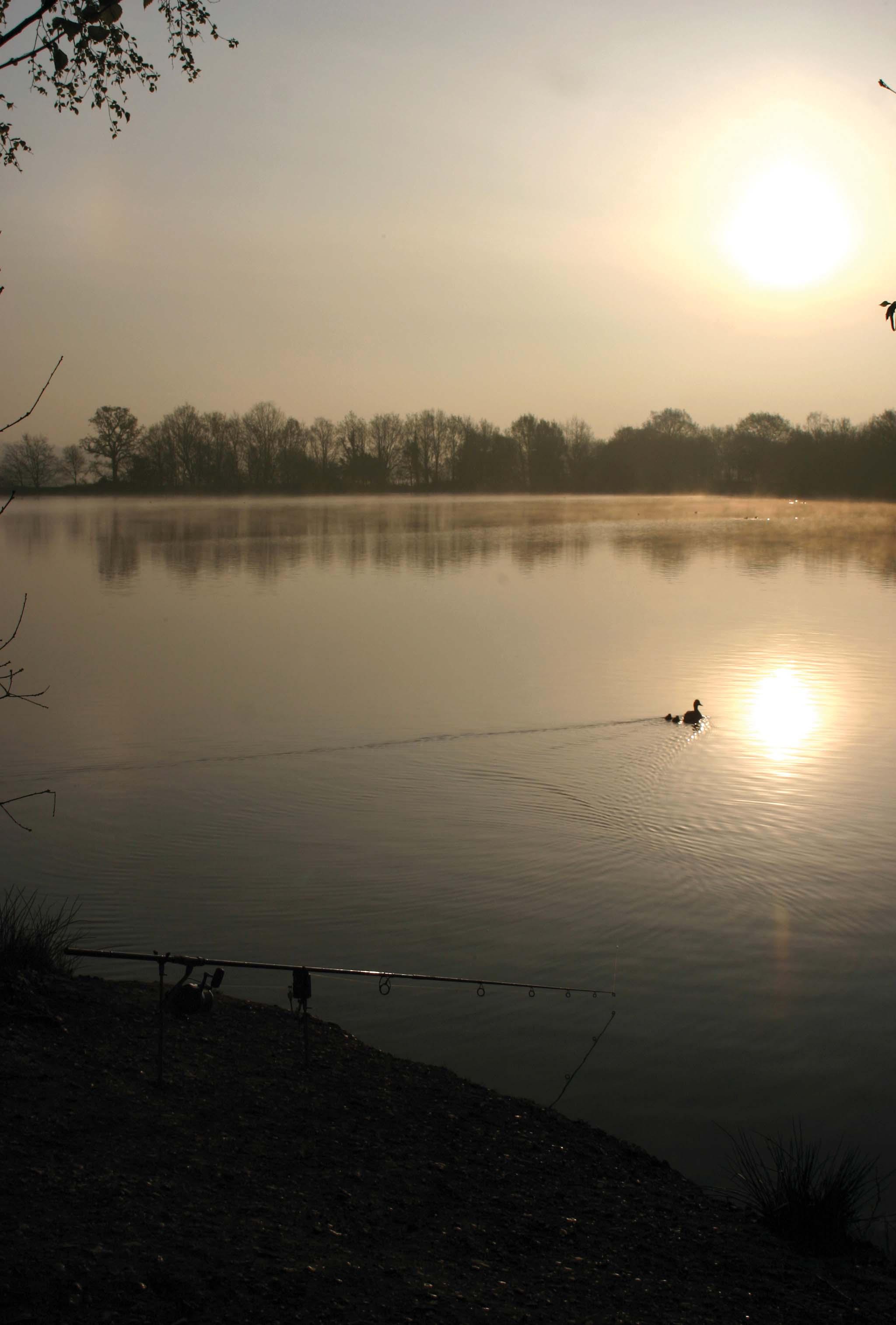
CARPOLOGY: And how did that differ from when you pulled off?
IAN POOLE: “It differed massively. By then (my fourth season), I was after just a couple of fish but due to recaptures, I ended up fishing just a handful of times. However, I still kept in touch and it seemed as though a new 40lb fish was popping up on an almost weekly basis. I think by the end of 2008, there were something like 12-15 different forties in there up to 49lb, and of course, the rest is history. Once the first one hit 50lb, a short time later, it seemed as though the floodgates had well and truly opened. At its peak, there was something like 20 different 50s, backed up by a silly amount of 40s.”
CARPOLOGY: Was it busy when you were on there, and were there many other ‘names’ fishing it?
IAN POOLE: “When I joined, the fishing mid-week was extremely quiet, with on average just two or three anglers on per night—a dream on 30-acres of water! It was certainly not uncommon to get the place to myself either, and I fished a number of nights where I was on my own. Other anglers in the press who would have been there included the likes of Steve Renyard and Myles Gascoyne, but during the first year, that was about it. One or two of the Yateley Angling guys had tickets, as did current British record holder Dean Fletcher—I think he still fishes there now.”
“At its peak, there was something like 20 different 50s, backed up by a silly amount of 40s.”
CARPOLOGY: Did you know at the time you were experiencing something very special, or is it only with hindsight that you see it now?
IAN POOLE: “No, I realised then how good it was. For the second season, my friend Clive managed to secure a ticket and being a wise old owl, he quickly highlighted to me the quality of fishing was of the likes that we would rarely, or if ever, see again. We had seen it on Horseshoe a short time before, and in truth, when I look back at my photo albums from there, I never really appreciated what we had. Yes, those first couple of years on Wellington were exceptional.”
CARPOLOGY: What were the going tactics on there back then?
IAN POOLE: “Fishing over large quantities of boilies was definitely regarded as the going tactic at the time, and when I visited Steve before joining, that’s exactly what he was doing. Fishing over a good spread of 18mm baits put out with a throwing stick, he had already bagged a 35lb mirror earlier in the session, so I did have something to go on. However, coming off the back of several years angling over at Horseshoe and in the Oxford area meant I had spent most of it spodding out bits and fishing a couple of rods tight over the top.
“To begin with I saw no reason to try anything different, and if it didn’t work, I would re-think things as I went forward. Fortunately, it worked from the off, especially in the open water, although the mix I used would be tweaked over time. On my very first evening, I spodded out half a bucket of hemp, pellet, corn and boilie with two rods over the area and had five up to 37lb. All night a slick ran off the spot that stretched right across the lake, and I think there would have been more to come had I not re-baited at 3 a.m. It killed the action stone dead, so I never did it again and relied on the hemp to keep pulling the carp back in.
“In time, I also dropped any pellet and corn from the mix and, as a starting point for a couple of rods, I would put out about 20 medium-sized spods as tight as I could get them. For the remaining third rod, it was a dozen, with the bait a 50/50 mix of hemp and boilie. For hookbaits, it would nearly always be either a ‘match the hatch’ pop-up or a double 14mm bottom bait depending on what was in front. The latter was a presentation I found particularly effective on there and gave excellent hook holds.
“There were certain swims where I wouldn’t spod bits, and on those I would switch back to boilie tactics. Again, though, I tried to stay off the obvious approach and do my own thing. Rather than the usual sized boilies, I had some 24mm donkey-chokers made up and would often use those together with a mix of 10s and 14s.”
CARPOLOGY: What was the most incredible haul you had or witnessed?
IAN POOLE: “The trip I always remember isn’t the largest catch I had numbers-wise, but over the course of two nights, I landed seven carp, including five of the biggest in there at the time. The fish were Bighead, The Linear, Folded Tail, The Big Common and one of the ghost commons. They ranged from 35 to 38lb, and even now that would be regarded as a big catch. However, if you consider it happened back in April 2005, it shows how special the venue was at the time. There just weren’t too many places around that could have thrown up a catch like that.
“In regards to other anglers, I can remember Steve Renyard having a silly amount of fish one weekend on a magazine feature, and towards the end of my time, Dave Ollif had an amazing four forties in less than 24hrs, but there were plenty of others as it was just that type of venue. Like anywhere else, it would go through the odd quiet period, but when back on form, it could throw up an amazing amount of big fish in a very short space of time.”
CARPOLOGY: What is your fondest memory of your time there?
IAN POOLE: “There wasn’t one thing, to be honest. Of course, I would be fibbing if I said the quality of the fishing wasn’t the main draw because it obviously was, but it was the whole package. Even though the park was open during the day and you had the public to deal with, by 5 p.m. everyone had gone and you had the place to yourself again.
“The angling was also very relaxed, and on the vast majority of occasions, you could turn up and have a good look around before setting up. The additional pressure of having one eye on the car park to see how many other anglers were unloading gear just didn’t occur, and that’s just how it should be. I think that maybe changed a little when the venue was at its absolute peak fish-wise, but that was a good while later, and when I was there, you were able to fish properly, which is a luxury you see less and less these days.
“Whilst fishing, I also got to know a few of the guys who worked on the park and they were a friendly bunch. On their early morning rounds, they would always call into the swim to say hello, which was handy, to say the least—especially if I had just caught one and needed a picture or two.”
“When I was there, you were able to fish properly, which is a luxury you see less and less these days.”
CARPOLOGY: Do you know much about the lake these days? How busy is it now; how much is a ticket; and what’s the stock like now?
IAN POOLE: “A little bit. There have been lots of changes since I was there last in 2007 but the venue still churns out plenty of huge fish to over 50lb. Maybe not as many as in its heyday a few years back when there were reported to be well over 20 fifties, but only the other day I saw the venue had produced a 54lb mirror. Angler-wise, the venue has unsurprisingly been a lot busier in recent times, and it is a lot more expensive now. The ticket was over £2,000 at one stage, but I am not too sure what the current price is.”





